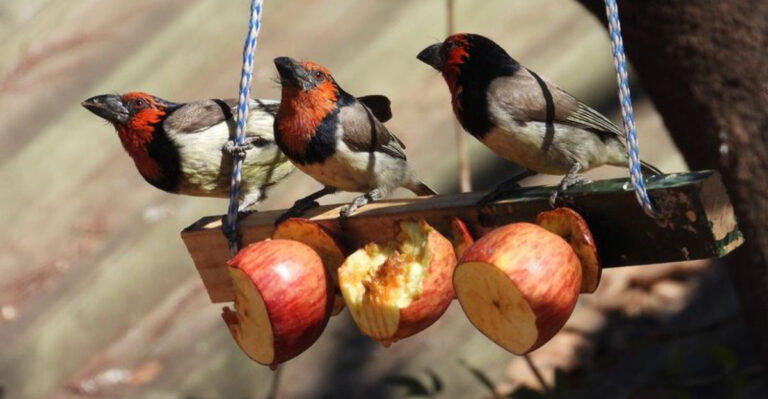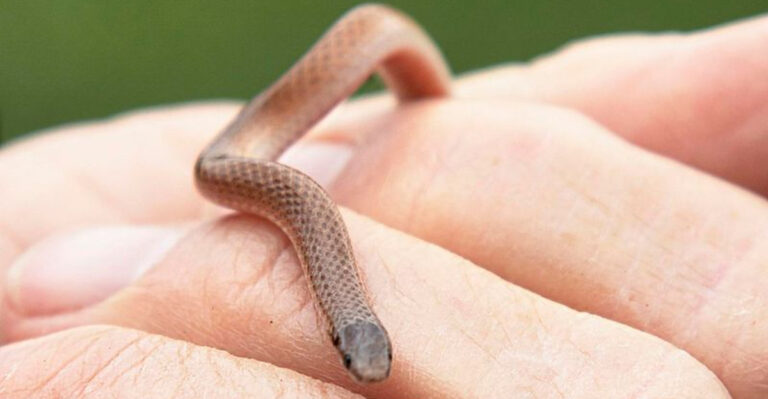12 Rare Birds You Can Only Find In U.S. Forests
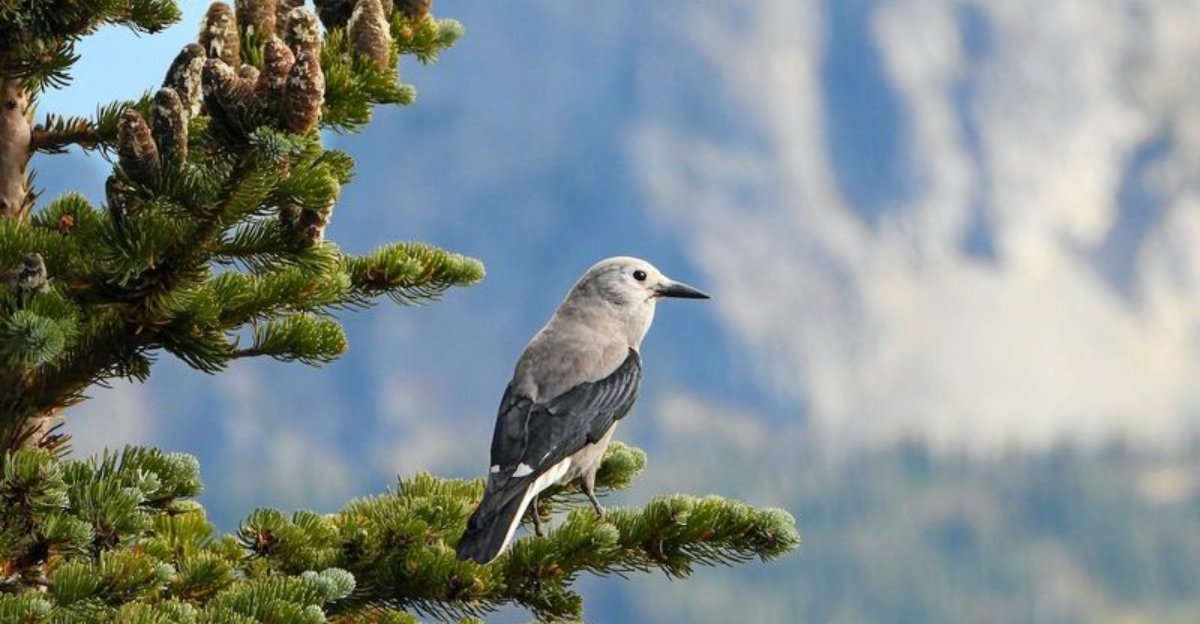
The vast forests of America hide some of the world’s most extraordinary feathered treasures. These rare birds have adapted to specific woodland habitats across the United States, making them unique to our natural heritage.
From the mysterious Kirtland’s Warbler in Michigan’s jack pine forests to the striking Ivory-billed Woodpecker of southern swamplands, these elusive avian wonders captivate both casual nature lovers and dedicated birders alike.
Let’s explore these remarkable forest dwellers that call America’s woodlands their exclusive home.
1. Kirtland’s Warbler
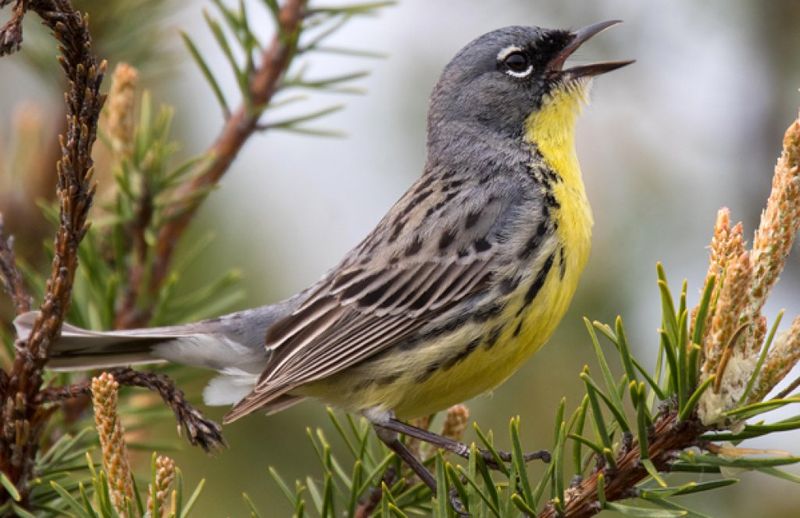
Sporting a bright yellow breast with distinctive black streaks, the Kirtland’s Warbler is one of America’s rarest songbirds. This tiny vocalist faced extinction in the 1970s when their population dropped to just 167 singing males.
They’re incredibly picky about their homes, nesting only in young jack pine forests in northern Michigan. These trees must be exactly 5-20 years old and 5-15 feet tall – talk about specific housing requirements!
Conservation efforts have helped their numbers grow to over 2,000 pairs. Fire management plays a crucial role, as these warblers depend on forest fires to create their ideal habitat.
2. Red-Cockaded Woodpecker
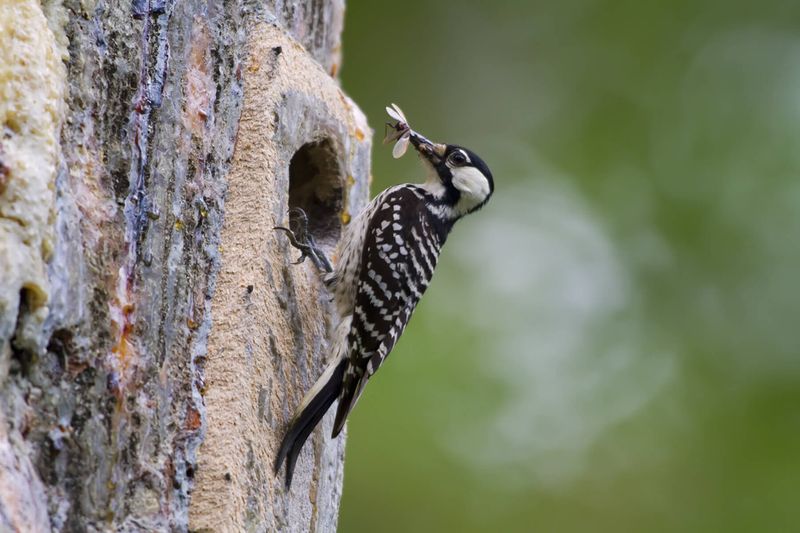
Hidden among old-growth pine forests of the southeastern United States, these remarkable woodpeckers are ecosystem engineers. Unlike other woodpeckers, they excavate nest cavities in living pine trees – a process that can take years to complete.
Their name comes from a tiny red streak on males that’s rarely visible. Habitat loss has hit them hard, as they require pine trees at least 80-120 years old for nesting.
Family matters for these social birds. Young woodpeckers often stay with their parents, helping raise new siblings in a cooperative breeding system. Their cavities provide homes for dozens of other forest creatures after the woodpeckers move on.
3. Spotted Owl

Mystery shrouds the Spotted Owl as it glides silently through ancient forests of the Pacific Northwest. With chocolate-brown feathers dotted with white spots, these nocturnal hunters have become powerful symbols of old-growth forest conservation.
Their deep, resonant hooting calls echo through towering redwoods and Douglas firs. Each pair needs up to 3,000 acres of mature forest to thrive – that’s nearly 2,300 football fields of territory!
Logging of old-growth forests pushed these owls to the brink. They face another threat from their more aggressive cousin, the Barred Owl, which has expanded its range westward and now competes for the same territories and food sources.
4. Bachman’s Warbler

The haunting story of Bachman’s Warbler reads like a mystery novel with no happy ending. Once flitting through southeastern swamp forests, this small yellow-and-black songbird hasn’t been officially documented since the 1980s.
Scientists believe this warbler may be extinct, though occasional unconfirmed sightings keep a flicker of hope alive. Their decline began in the early 1900s when their winter habitat in Cuba was converted to sugar plantations.
The males had distinctive black throats and yellow foreheads that flashed brilliantly among the canebrakes and swampy underbrush. Their specialized feeding technique involved probing for insects in curled leaves – a niche that disappeared with their habitat.
5. California Condor
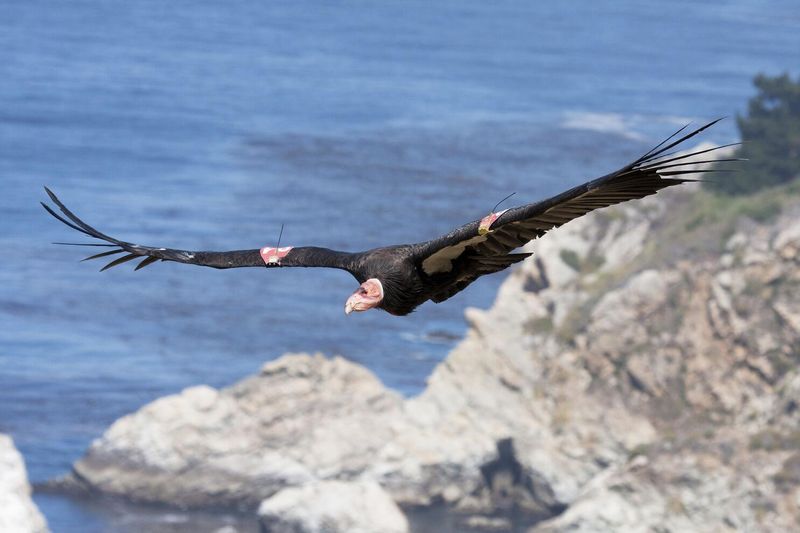
Soaring on a massive 9.5-foot wingspan, the California Condor commands the skies above western forests and mountains. These ancient-looking birds nearly vanished forever – by 1987, only 27 remained in the world.
An ambitious captive breeding program brought them back from the edge. Scientists captured every remaining wild condor and carefully bred them in captivity. Today, over 300 of these magnificent birds once again ride thermal currents in California, Arizona, and Baja Mexico.
Their bald, reddish-orange heads might not win beauty contests, but these remarkable scavengers can live up to 60 years. Lead poisoning from ammunition in animal carcasses remains their greatest threat.
6. Ivory-Billed Woodpecker
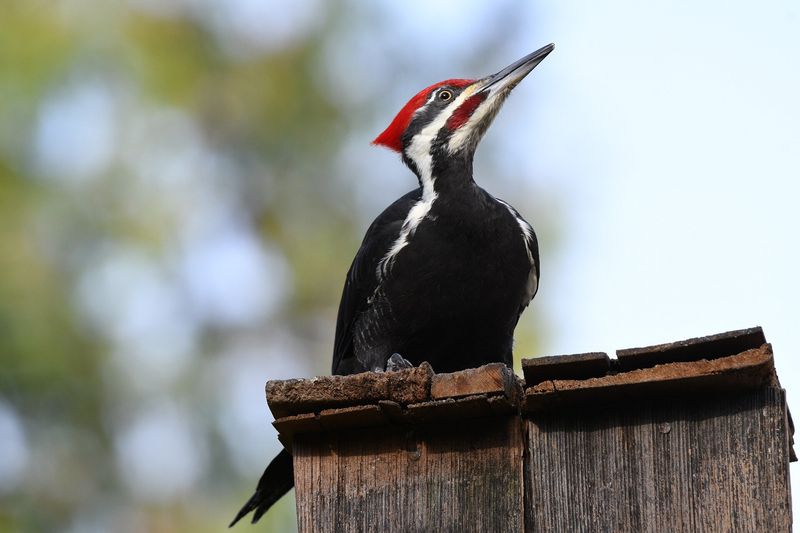
Known as the “Lord God Bird” because of exclamations people made upon seeing it, the Ivory-billed Woodpecker represents both tragedy and hope. This magnificent bird – with its 20-inch height and 30-inch wingspan – was thought extinct for decades.
Tantalizing evidence emerged in 2004 when researchers reported sightings in Arkansas. The scientific community remains divided on whether any survive today. Their decline came with the logging of virgin bottomland forests across the southeastern United States.
Their massive white bills could strip bark from dead trees in powerful blows. Unlike many woodpeckers, they required vast tracts of undisturbed forest with abundant dead trees to provide the beetle larvae they fed upon.
7. Florida Scrub-Jay
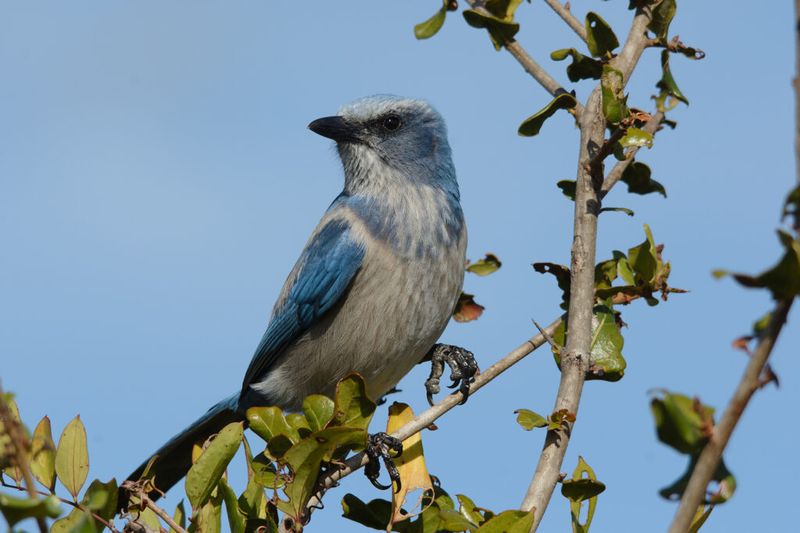
Bright blue feathers flash among Florida’s ancient oak scrublands as the state’s only endemic bird species goes about its day. Found nowhere else on Earth, these charismatic jays live in extended family groups, with young birds helping their parents raise the next generation.
Their incredible spatial memory allows them to hide thousands of acorns and retrieve them months later. This caching behavior helps regenerate oak scrub habitat when forgotten seeds sprout into new trees.
Development has fragmented their habitat into isolated patches. These social birds rarely travel more than a mile from where they were born, making them extremely vulnerable to habitat loss. Fire suppression further threatens them, as they require periodic burns to maintain their scrubby habitat.
8. Gunnison Sage-Grouse
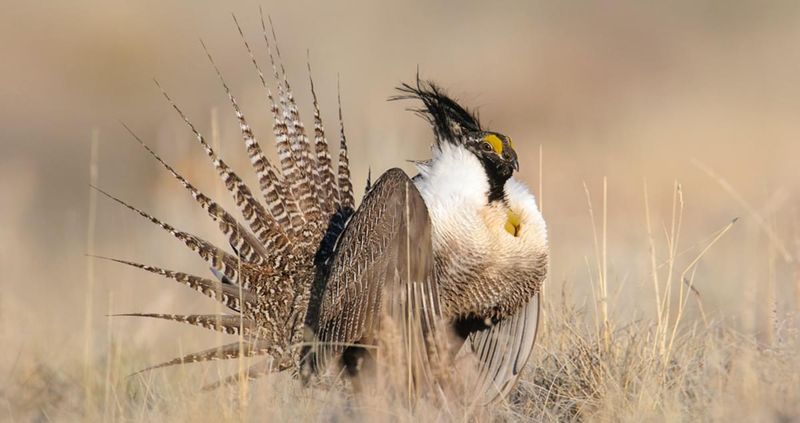
Male Gunnison Sage-Grouse perform one of nature’s most spectacular courtship displays. Strutting across sagebrush clearings, they inflate bright yellow air sacs on their chests while fanning ornate tail feathers – all accompanied by bizarre popping sounds that echo across mountain valleys.
Not discovered as a separate species until 1999, these birds exist only in seven isolated populations in Colorado and Utah. Their total population hovers around 5,000 birds, making them one of America’s most endangered birds.
Sagebrush is their lifeline – they eat it, shelter under it, and raise their young in its protective cover. Urban development, energy exploration, and invasive plants have fragmented their already limited range, pushing these remarkable birds toward extinction.
9. Colima Warbler

Gray and unassuming at first glance, the Colima Warbler hides a surprising secret – it’s the only bird species that nests exclusively in the United States while being named after a Mexican state. Birders trek to the remote Chisos Mountains in Big Bend National Park, Texas, for a glimpse of this elusive songbird.
They build cup-shaped nests on the ground beneath oak and pine trees at elevations above 7,000 feet. Climate change poses a serious threat, as warming temperatures could push their required habitat beyond the mountain peaks.
Their simple, trilling song echoes through high mountain canyons during breeding season. The rest of the year, they retreat to Mexican mountain forests, making them true international travelers.
10. Bicknell’s Thrush
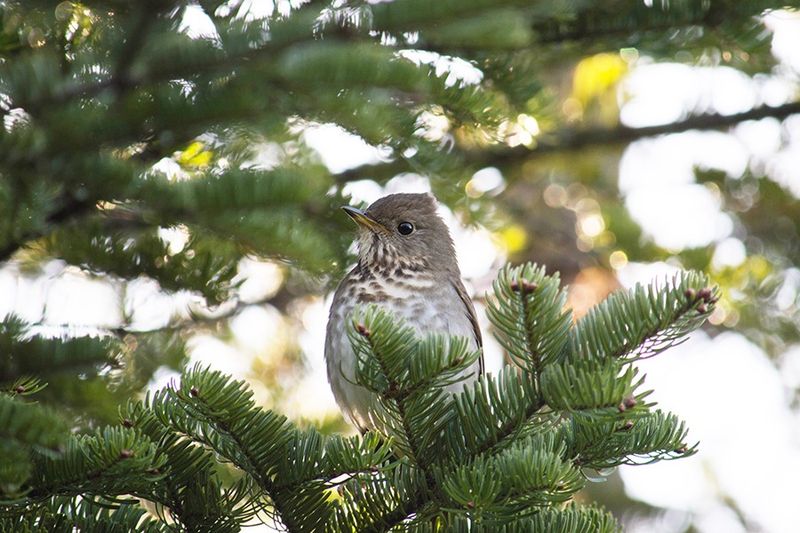
Dawn breaks over misty mountaintops as the flute-like song of Bicknell’s Thrush fills the air. These secretive songbirds nest only in stunted spruce-fir forests near the treeline of northeastern mountains, including the Adirondacks, Green Mountains, and White Mountains.
Climate change threatens their already tiny breeding range. As temperatures warm, hardwood forests creep upslope, squeezing their specialized habitat from below. Scientists estimate fewer than 100,000 remain.
Their winter migration takes them to Caribbean islands, primarily the Dominican Republic, where deforestation poses additional challenges. Unusual among songbirds, multiple males often help feed nestlings from a single female – a rare cooperative breeding system that scientists still don’t fully understand.
11. Clark’s Nutcracker
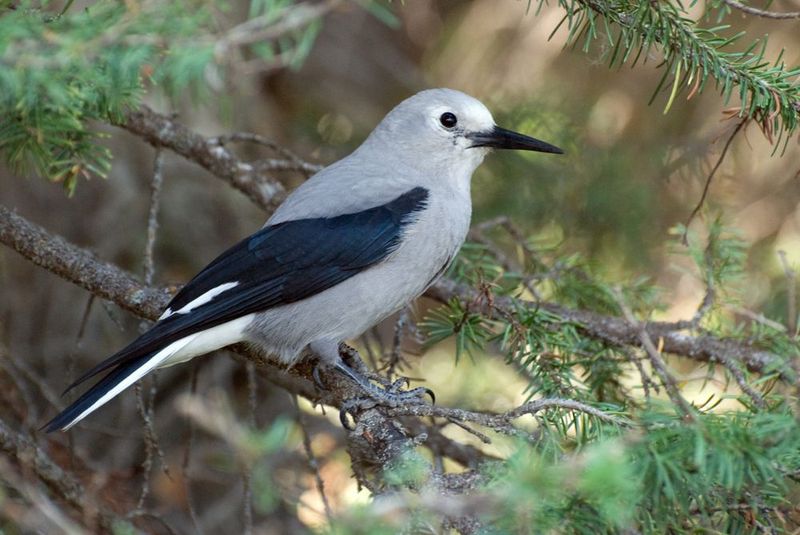
Master of memory and mountain survivor, Clark’s Nutcracker plays a crucial role in high-elevation forest ecosystems across western mountains. These gray birds with black wings and white tail patches can remember the locations of up to 10,000 seed caches they’ve hidden.
Their special relationship with whitebark pine trees represents one of nature’s most remarkable partnerships. The trees produce seeds too large for wind dispersal, relying instead on the nutcrackers to plant future forests.
A specialized pouch under their tongues allows them to carry up to 150 pine seeds at once. When they retrieve only about two-thirds of their cached seeds, the forgotten ones grow into new trees, ensuring both species’ survival in harsh alpine environments.
12. Golden-Cheeked Warbler
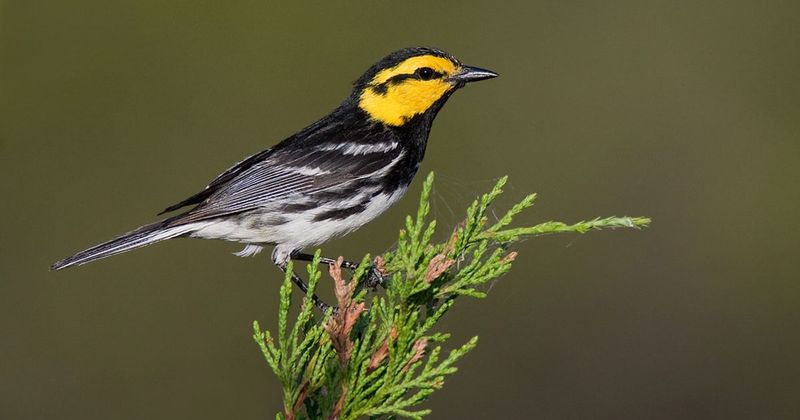
Brilliant yellow faces set against jet-black throats make Golden-cheeked Warblers unmistakable jewels of Texas Hill Country. These endangered songbirds breed nowhere else on Earth except in specific juniper-oak woodlands of central Texas.
Their unique nesting requirements include strips of bark from mature Ashe juniper trees – locally called “cedar” – which they weave together with spider silk to create nests. Habitat fragmentation from urban sprawl around Austin and San Antonio threatens their future.
After breeding, they undertake an epic journey to winter in the pine-oak forests of southern Mexico and Central America. Conservation efforts include protecting large tracts of breeding habitat and working with coffee growers to maintain forest cover in their winter range.





